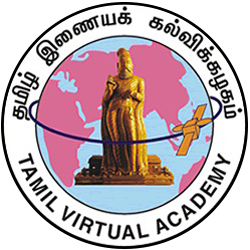Primary tabs
-
PREFACE
IT is an acknowledged fact that the Tamil Christian Church is sadly deficient in vernacular literature of a really high-class order. Many of the works at present in existence are mere translations, - and for the most part very literal ones, - of popular English books. Moreover they are written in a style which, while it is intelligible to the ordinary reader, possesses no pretensions to literary merit and does not attract the attention of the more thoughtful and intelligent section of the Tamil community. The author of the book before us has, therefore, at the cost of much time and pains, laboured to produce something which shall be really worthy, from a literary point of view, of 'the glorious Gospel of the blessed God.' The devout and intelligent reader must judge for himself as to the measure of success which has been achieved.
A few remarks are necessary, by way of introduction, in order to elucidate the object and nature of the poem which is now, for the first time, placed before the public.
1. The author's object. - As its title implies, this work in question is based, as regards its general plan and structure, on John Bunyan's immortal allegory, 'The Pilgrim's Progress'. The aim of the author has been to adopt the plan of that inimitable story, but so to clothe it in new and elegant attire as to present it to us in a really Tamil guise. Those who are acquainted with Tamil poetical compositions and the laws which govern them will be aware that there are certain features, in respect of arrangement and illustration, which are considered indispensable. These features will be found to have been faithfully preserved, except where the observance of them would have been inconsistent with the higher laws of Christian truth and purity. The result of our author's labours, spread over a period of no less than 14 years, is a beautiful classic poem, comprised in 5 books, which are divided into 47 sections or cantos and contain in all about 4000 stanzas.
2. Points of contrast with Hindu poems. - While our author has followed, wherever possible, the accepted laws relating to Tamil poems, it will readily be seen that certain points of difference present themselves, arising, for the most part, from the grand requirements of the Gospel. For example, those impure metaphors and questionable similes which defile the pages of so many Hindu books are conspicuous by their absence here. There is a like omission of that tendency to gross exaggeration and of that puerile fondness for the wonderful and the incredible which

